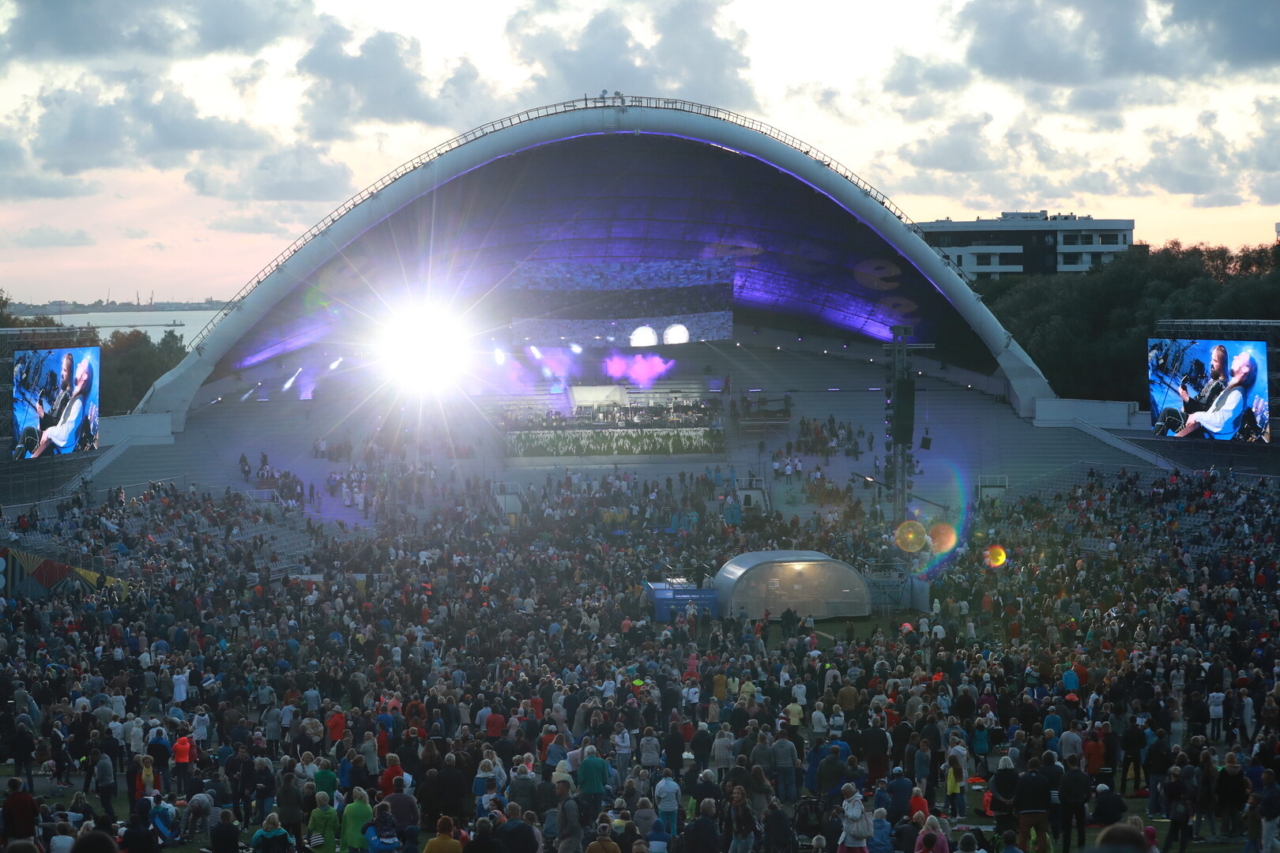Song Festival Grounds
The history of the Tallinn Song Festival Grounds is closely tied to the song festivals. Signs of the Estonian people’s love of singing can be traced back to ancient times, when village bagpipers would gather to sing together. Even during the darkest feudal periods, lullabies and folk songs could be heard in the village barns and household quiet. Most of Estonia’s traditional folk song heritage originates from this period.
Until the 19th century, no singing societies had been officially registered, nor had any large-scale song events taken place. As a result of early 19th-century reforms, the establishment of choirs first became possible, quickly gaining popularity among the Estonian population. By the middle of the century, choirs had spread across the entire Estonian territory. The activities of local choirs were soon followed by inspiring song festivals in Jõhvi, Simuna, and Uulu. These smaller festivals paved the way for organizing true mass singing events. Thus, as a result of the national awakening, the first general song festival took place in Tartu in 1869.
For the performers of the first song festivals, no special stage had been built; they were accommodated on provisional platforms. It was only in 1923, for the 8th General Song Festival, that a dedicated stage was designed as a special structure under the initiative of the Estonian Singers’ Union.
This new-classical wooden stage with late Jugendstil influences was designed by the well-known architect of the time, Karl Burman, and was located above the current Kadriorg Stadium stands. The stage’s stepped structure was crowned by a curved-back wall with wings. The central part of the back wall and the ends of the wings were architecturally emphasized and proportioned to provide a ceremonious backdrop for the choirs. The first stage accommodated 12,000 singers. The territory of the Tallinn Song Festival Grounds began to be used as a venue for general song festivals starting in 1928.
Architecture of the Song Festival Grounds
The main architectural element of the stage is a hyperbolic-paraboloid canopy stretched between two arches. The rear concrete arch rests on columns and forms the back wall of the stage. The steel front arch, slanting over the stage, has a span of 73 meters and a height of 32 meters at the center, supported by massive abutments. The concave, multidirectionally curved roof between the two arches is carried by a suspended network of cables, with a mesh size of 3×3 meters. The inner surface of the canopy acts as an acoustic screen, although only partially, covering about three-quarters of the area, as the upper portion no longer contributes.”
The rooms beneath the stage are very spacious. They house the administration of the venue but are primarily intended as gathering areas for performers. Five stage entrances (originally planned as seven) allow for quick rotation of singers. On the north side, the slender 42-meter-high ceremonial flame tower completes the side wall; it was renovated in 1998 and is open to visitors. Opposite the tower, the four-story ‘Radio House’ served as a modern wing for reporters until the late 1980s and is one of the first buildings constructed with ribbon windows after the Stalinist era.
The stage was designed to accommodate 15,000 singers, but it can also be used in reverse, with performances taking place on the horizontal area in front of the stage while the audience sits on the stage itself. This arrangement has been widely used for concerts with up to 10,000 spectators. The entire concave, elliptical audience area is surrounded by multiple rows of linden trees, chosen for both acoustic and spatial design considerations.
Tallinn Song Festival Grounds today
Today, the territory of the Tallinn Song Festival Grounds belongs to the City of Tallinn and is managed by the Tallinn Song Festival Grounds Foundation, established by the City of Tallinn in 2004.
On the grounds of the Song Festival, the stage stands as one of the few Soviet-era architectural works that still attracts international attention. Almost every day, large groups of tourists visit to explore the grounds and admire the view of the Old Town and the sea from the stage’s slope.
Above all, the Song Festival Grounds is known as a venue for song festivals, concerts, exhibitions, and other sports and cultural events. Many well-known Estonian artists have performed here, including Ivo Linna, Anne Veski, Liis Lemsalu, Terminaator, Tommy Cash, Smilers, and others. Internationally famous stars such as Michael Jackson, Madonna, The Weeknd, Metallica, Bryan Adams, Justin Timberlake, Lady Gaga, 50 Cent, Imagine Dragons, AC/DC, and others have also performed at the venue.

Watch a video of building Song Festival Arch
In 2018, a major renovation of the Song Festival Arch began, during which both the acoustic arch and the roof were given a new form. Upon completion of these works, the entire central complex of the stage—the stage itself, the flame tower, and the radio tower—was renovated. In 2019, 150 years had passed since the first Song Festival in 1869. The renovation was necessary both for safety reasons and to ensure that the Song Festival Grounds could host the jubilee song festival with dignity.
